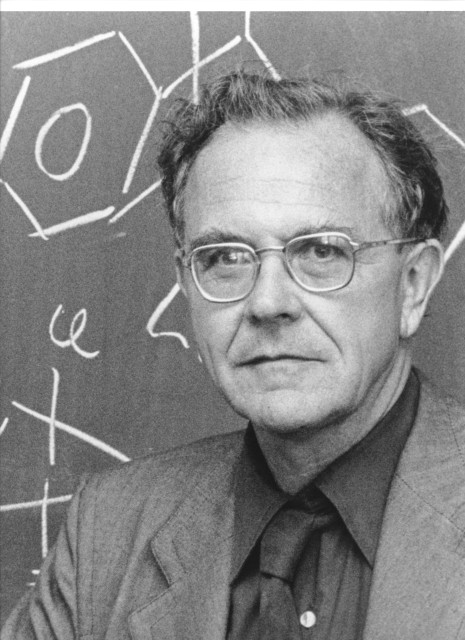Sir Geoffrey Wilkinson
1921-1996

Wilkinson shared the 1973 Nobel Prize in Chemistry with E. O. Fischer for pioneering work in organometallic chemistry. While at Harvard, Wilkinson (and Woodward independently) deduced the correct structure for biscyclopentadienyl iron, later to be known as ferrocene; this work opened up the entire field of metallocene chemistry. Studies on Cp(CO)2FeCp showed the first example of a fluxional molecule (or "ring whizzer"). After returning to England, where in 1956 he became Professor at the Imperial College of Science, Wilkinson continued research on transition metal complexes. The rhodium complex Rh(Cl)(PPh)3 became known as "Wilkinson's Catalyst", useful for selectively hydrogenating olefins under mild, homogeneous conditions. Later, catalysts for olefin isomerization, hydroformylation and hydrosilylation were developed. Wilkinson's text, written with his former student, F. Albert Cotton, "Advanced Inorganic Chemistry: A Comprehensive Text", had a profound influence for decades on the teaching of that subject.
Sponsor: Milton Smith III
Location in chemistry building: Fourth Floor; Elevator area East Wall; Sequence 2
Source: Professor Wilkinson